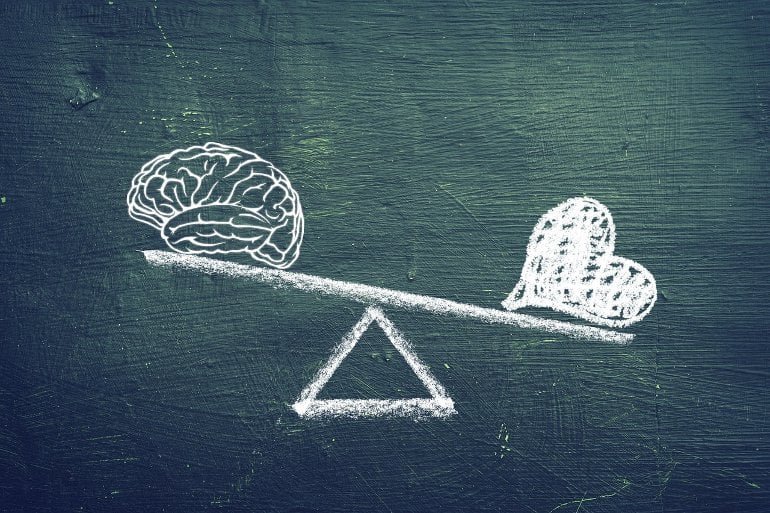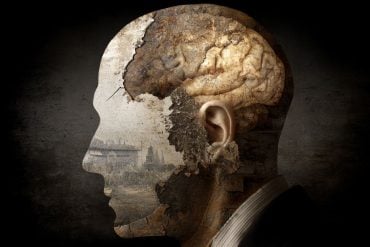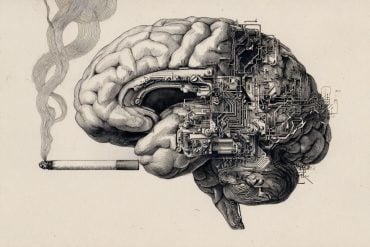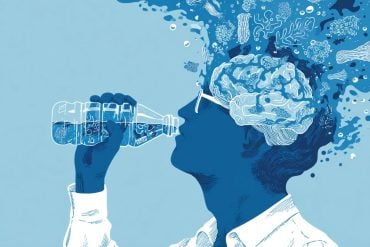Summary: Momentary perceptions of time may stretch or shrink with each heartbeat and are not continuous, as previously thought.
Source: Cornell University
How long is the present? The answer, Cornell researchers suggest in a new study, depends on your heart.
They found that our momentary perception of time is not continuous but may stretch or shrink with each heartbeat.
The research builds evidence that the heart is one of the brain’s important timekeepers and plays a fundamental role in our sense of time passing—an idea contemplated since ancient times, said Adam K. Anderson, professor in the Department of Psychology and in the College of Human Ecology (CHE).
“Time is a dimension of the universe and a core basis for our experience of self,” Anderson said. “Our research shows that the moment-to-moment experience of time is synchronized with and changes with the length of a heartbeat.”
Saeedeh Sadeghi, a doctoral student in the field of psychology, is the lead author of “Wrinkles in Subsecond Time Perception are Synchronized to the Heart,” published March 2 in the journal Psychophysiology. Anderson is a co-author with Eve De Rosa, the Mibs Martin Follett Professor in Human Ecology (CHE) and dean of faculty at Cornell, and Marc Wittmann, senior researcher at the Institute for Frontier Areas of Psychology and Mental Health in Germany.
Time perception typically has been tested over longer intervals, when research has shown that thoughts and emotions may distort our sense time, perhaps making it fly or crawl. Sadeghi and Anderson recently reported, for example, that crowding made a simulated train ride seem to pass more slowly.
Such findings, Anderson said, tend to reflect how we think about or estimate time, rather than our direct experience of it in the present moment.
To investigate that more direct experience, the researchers asked if our perception of time is related to physiological rhythms, focusing on natural variability in heart rates. The cardiac pacemaker “ticks” steadily on average, but each interval between beats is a tiny bit longer or shorter than the preceding one, like a second hand clicking at different intervals.

The team harnessed that variability in a novel experiment. Forty-five study participants—ages 18 to 21, with no history of heart trouble—were monitored with electrocardiography, or ECG, measuring heart electrical activity at millisecond resolution. The ECG was linked to a computer, which enabled brief tones lasting 80-180 milliseconds to be triggered by heartbeats. Study participants reported whether tones were longer or shorter relative to others.
The results revealed what the researchers called “temporal wrinkles.” When the heartbeat preceding a tone was shorter, the tone was perceived as longer. When the preceding heartbeat was longer, the sound’s duration seemed shorter.
“These observations systematically demonstrate that the cardiac dynamics, even within a few heartbeats, is related to the temporal decision-making process,” the authors wrote.
The study also showed the brain influencing the heart. After hearing tones, study participants focused attention on the sounds. That “orienting response” changed their heart rate, affecting their experience of time.
“The heartbeat is a rhythm that our brain is using to give us our sense of time passing,” Anderson said, “and that is not linear—it is constantly contracting and expanding.”
The scholars said the connection between time perception and the heart suggests our momentary perception of time is rooted in bioenergetics, helping the brain manage effort and resources based on changing body states including heart rate.
The research shows, Anderson said, that in subsecond intervals too brief for conscious thoughts or feelings, the heart regulates our experience of the present.
“Even at these moment-to-moment intervals, our sense of time is fluctuating,” he said. “A pure influence of the heart, from beat to beat, helps create a sense of time.”
About this time perception research news
Author: James Dean
Source: Cornell University
Contact: James Dean – Cornell University
Image: The image is in the public domain
Original Research: Closed access.
“Wrinkles in subsecond time perception are synchronized to the heart” by Saeedeh Sadeghi et al. Psychophysiology
Abstract
Wrinkles in subsecond time perception are synchronized to the heart
The role of the heart in the experience of time has been long theorized but empirical evidence is scarce. Here, we examined the interaction between fine-grained cardiac dynamics and the momentary experience of subsecond intervals.
Participants performed a temporal bisection task for brief tones (80–188 ms) synchronized with the heart. We developed a cardiac Drift-Diffusion Model (cDDM) that embedded contemporaneous heart rate dynamics into the temporal decision model.
Results revealed the existence of temporal wrinkles—dilation or contraction of short intervals—in synchrony with cardiac dynamics. A lower prestimulus heart rate was associated with an initial bias in encoding the millisecond-level stimulus duration as longer, consistent with facilitation of sensory intake.
Concurrently, a higher prestimulus heart rate aided more consistent and faster temporal judgments through more efficient evidence accumulation. Additionally, a higher speed of poststimulus cardiac deceleration, a bodily marker of attention, was associated with a greater accumulation of sensory temporal evidence in the cDDM.
These findings suggest a unique role of cardiac dynamics in the momentary experience of time. Our cDDM framework opens a new methodological avenue for investigating the role of the heart in time perception and perceptual judgment.







